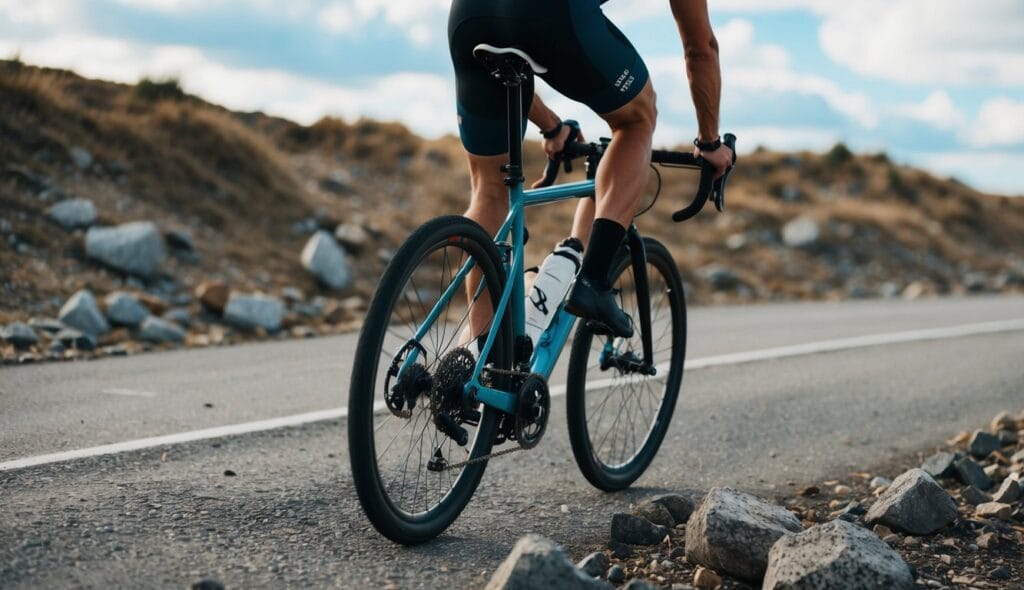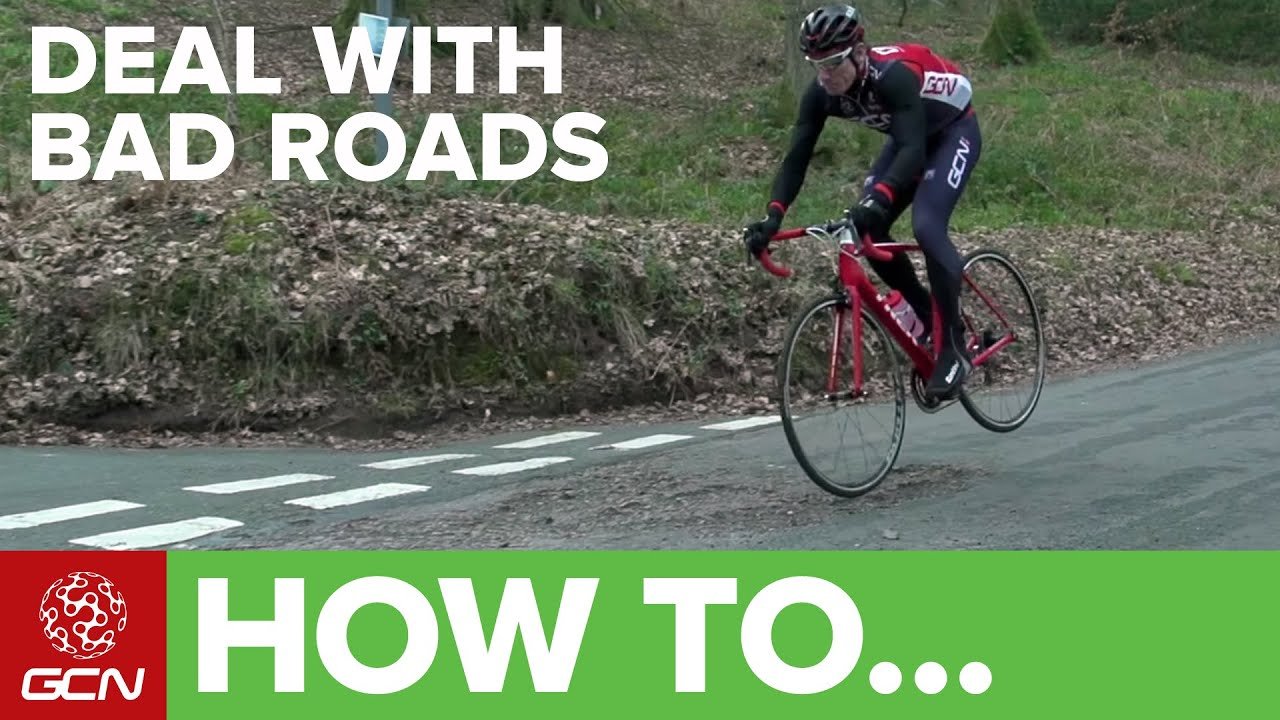
Cycling on rough roads can be an exciting adventure, offering a unique challenge for both new and experienced riders. The thrill of navigating uneven terrain comes with the responsibility of staying safe.
Cycling on such roads requires careful attention to surroundings. Bikers might face obstacles like debris or potholes. The National Safety Council highlighted that in 2021 there were 299,944 individuals involved in bicycle-related injuries, emphasizing the importance of caution.
By considering a few essential safety tips, cyclists can confidently enjoy the ride. Whether it involves choosing the right bike, adjusting techniques, or being aware of the surroundings, these strategies can help bikers maximize their experience while minimizing risk. Embracing these practices ensures that the exhilarating nature of rough road cycling remains both enjoyable and safe for everyone.
Best Ways to Navigate Rough Roads on a Bicycle
Cycling on rough roads can be a thrilling adventure if approached with the right tips and techniques. For starters, one should consider the road conditions before setting out.
Uneven terrain, such as gravel and cobblestones, requires a different approach than smooth asphalt. Larger tires offer more stability on these surfaces, reducing the impact of bumps and rocky sections.
Maintain a Steady Cadence: An even pedaling rhythm helps with balance and traction on gravel and slick roads. It’s like dancing—keeping a good beat helps everything flow.
Positioning Matters: Stay loose to absorb shocks. Adjusting your position by moving slightly back on the saddle can enhance control when navigating rough patches. This small shift in body weight helps maintain stability.
Choose the Right Gear: Lower gears make it easier to tackle steep climbs on uneven terrain. Adjusting gears while riding can also help maintain momentum and keep the ride smooth.
For further tips, check out the insights from TDA Global Cycling, which are useful for planning and preparation.
Tip # 1 – Choose the Right Bike
Selecting the right bike is crucial for tackling rough roads with ease. When it comes to bumpy or uneven paths, a mountain bike or a gravel bike is often the best choice.
These types of bikes are designed with durability in mind and are equipped with features like a sturdy frame and wide tires for extra stability.
Wide tires provide better grip and stability on rugged terrain compared to narrow ones. A proper suspension system is another key feature to consider, as it reduces the discomfort caused by bumps and vibrations, ensuring a smoother and more comfortable ride.
When exploring different bike options, make sure to match the bike’s features with the road conditions you’ll encounter. This consideration will help ensure a safe and comfortable journey wherever you choose to ride.
For more insights on selecting the right bike for your needs, check out this guide.
Tip #2 – Adjust Your Cycling Technique
Cycling over rough terrain requires a bit of skill and technique to ensure traction and stability.
When riders encounter bumps or uneven surfaces, they need to stay calm and focused. A relaxed grip on the handlebars allows them to use their arms and legs as natural shock absorbers.
Slightly shifting their weight back and keeping it centered on the bike can help maintain control.
To improve stability, they should keep knees and elbows bent. This flexibility helps in absorbing shocks. Smooth pedaling and a steady speed are key to navigating rough patches without losing control. Avoid sudden movements that could lead to a spill or instability.
Tip: Practicing the bunny-hop technique can be useful. It helps clear obstacles like rocks or curbs without stopping. With practice, riders will find it easier to maintain balance and control.
Tip # 3 – Look Ahead
When cycling on rough roads, maintaining concentration is key. Distraction can throw off balance and control.
Focusing on the road ahead helps anticipate obstacles like rocks, bumps, or potholes. This proactive strategy allows cyclists to modify speed and position, avoiding unexpected hazards.
Staying alert is crucial for navigating uneven surfaces safely.
By keeping their gaze forward, cyclists can make necessary adjustments in time, ensuring a smoother ride.
Monitoring the path ahead not only enhances safety but also improves confidence, making the ride more enjoyable. Remember, a steady focus can make all the difference on challenging terrain.
Tip # 4 – Lower Your Tire Pressure
Lowering the tire pressure is a smart move when tackling tough terrains.
This adjustment increases the contact area between the tire and the ground. More contact means better grip and traction. Bumpy rides can be smoothed out since lower pressure helps absorb shocks and vibrations.
Experimentation is key. Different surfaces require different pressures to avoid an overly bumpy ride or the risk of a flat. It’s a balancing act that depends on the conditions of the ride.
For more details on managing tire pressure, check out this Complete Tire Pressure Check Guide for E-Bike Owners. Keeping an eye on pressure will make adventures much more pleasant.
Tip # 5 – Stay Away From Gutters
Staying away from gutters is a crucial tip for cyclists. The edges of roads can be filled with potholes, debris, and other hazards that are not friendly to bike tires.
Riding in the gutters could lead to unfortunate accidents or costly bike damages. Instead of navigating through this risky area, cyclists should opt for the middle of the road or designated cycling lanes.
These routes tend to have smoother surfaces, providing a more enjoyable and safer ride. Avoiding gutters not only keeps riders safer but also helps protect their bikes from unnecessary wear and tear.
Tip #6 – Utilize Your Brakes Properly
Sudden braking can lead to loss of control, skids, and potentially accidents, especially on challenging terrains.
It’s crucial to apply brakes carefully and gradually to ensure a safe ride. Here are some tips:
- Brake Gradually: Use both front and rear brakes together with a gentle, steady force. This helps maintain control and traction, avoiding sudden stops that might cause a skid.
- Mind Your Weight: When braking, shift your weight back. This adjustment allows better control and helps prevent the front wheel from skidding.
- Stay Calm: Panicking can lead to abrupt actions. Keep calm, and focus on maintaining smooth and deliberate movements.
For more on expert biking, check out descent tips for downhill riding.
Tip # 7 – Stay Alert

Staying alert on the road is key to keeping safe.
Cyclists need to focus on what’s ahead and around them, checking for hurdles like sudden changes in road surfaces or unexpected traffic.
Watching the road closely allows a biker to see bumps, potholes, or gravel patches that could make the ride bumpy.
It’s also important to listen for any unusual noises that might signal a problem with the bike or signal nearby hazards. This heightened awareness aids in staying safe and in control.
Read Also: A Comprehensive Guide to E-Bike Safety Essentials
Tip # 8 – Keep Yourself Hydrated
Water is like a superpower for cyclists, especially when tackling rough roads. Staying hydrated during a ride is crucial because biking over challenging terrain can make you sweat a lot, leading to significant fluid loss. Without enough water, you might feel more tired or even get muscle cramps.
Before your ride: Drink a cup of water to start off right.
During your ride: Keep sipping regularly. A hydration pack can help you drink easily while pedaling.
After your ride: Refill your body’s fuel tank with more water.
If you’re going on longer journeys, consider a hydration system like a pack or bottle. These ensure that water is always within reach and can significantly boost your cycling performance by keeping those hydration levels up.
Bonus: Here’s How to Navigate Common Rough Roads Using Your Bike
Cycling on rough roads can be tricky, but it’s manageable with the right approach. Here’s a quick guide to help navigate different types of rough surfaces:
- Gravel: For those with bikes equipped for adventure, gravel is no big deal. But if your tires are narrow, the key is to go slow and find the smoothest path. Professional cyclist Alison Tetrick advises staying relaxed and keeping an eye out for the best line on the rough terrain.
- Potholes: Even on nice roads, potholes can be a problem. If avoiding them is impossible, a quick bunny-hop is ideal. If not, hitting the pothole head-on and trying to stay upright is the best bet.
- Cobbles: When it comes to cobblestones, especially when wet, momentum is crucial. Increasing speed through cobbles can help reduce their impact, making it a smoother ride.
- Slick Roads: These can be as slippery as ice. Riding alertly and looking ahead can prevent mishaps. It’s important to stay relaxed and avoid sudden movements to safely navigate wet patches.
Final Thoughts
Cycling on rough roads can be exciting but also a bit challenging. It’s important to select the right gear and maintain focus throughout the ride. Prioritize willpower and strategic planning.
To enhance comfort, using gloves with good padding can really help. They provide better grip and reduce the impact of vibrations.
It’s wise to keep your tire pressure lower when tackling unpaved surfaces. This increases the contact area between the tire and the ground, offering greater traction.
Staying hydrated is another critical aspect. Ensure your water bottles are securely fastened, so they don’t pop out on bumpy paths. For more tips, explore <7 helpful strategies for rough roads>. Happy cycling!
Frequently Asked Questions
What type of bike is suitable for both road and gravel conditions?
A versatile choice for both road and gravel conditions is a gravel bike. These bikes feature a sturdy frame and can accommodate wider tires, giving riders stability and comfort on various terrains. Some models come with disc brakes for reliable stopping power.
What safety precautions should be taken when cycling on rough roads?
Safety is key when cycling on rough roads. Riders should wear a well-fitted helmet, use gloves to protect their hands, and wear reflective gear for visibility. It’s also important to equip your bike with bright lights for both the front and rear, especially if cycling at dawn or dusk.
Which features should I look for in a cycle designed for rough terrain?
When selecting a bike for rough terrain, look for the following features:
- Disc Brakes: Ensure reliable stopping in various weather conditions.
- Wider Tires: Wider tires provide better traction and stability.
- Strong Frame: A durable frame can handle the bumps and jolts of rough roads.
- Quality Suspension: Good suspension helps absorb shocks, improving rider comfort.
What are some strategies to improve endurance for uphill cycling sections?
Improving endurance for uphill cycling requires consistent practice. Riders can engage in interval training, which involves alternating between high and low-intensity efforts. Gradually increasing the length and intensity of rides also boosts stamina. Ensuring proper nutrition and hydration is equally important.
How can one increase strength for more effective road cycling?
Building strength for road cycling often involves a mix of on-bike and off-bike exercises. Incorporate hill repeats into your rides to strengthen leg muscles. Off the bike, engage in exercises like squats and lunges to build core and lower body strength, which translates to more power when cycling.
What are the best practices for maintaining a bicycle used on both paved and unpaved surfaces?
Regular maintenance is crucial for a bike used on mixed surfaces.
Clean the bike thoroughly after rides to remove dirt and grime, especially from the drivetrain and brakes.
Check tire pressure frequently and adjust as needed for optimal performance.
Lubricate the chain regularly and inspect the bike for any wear and tear or loose components.









